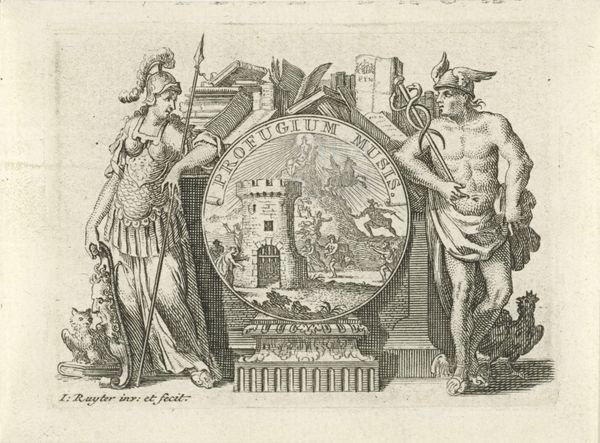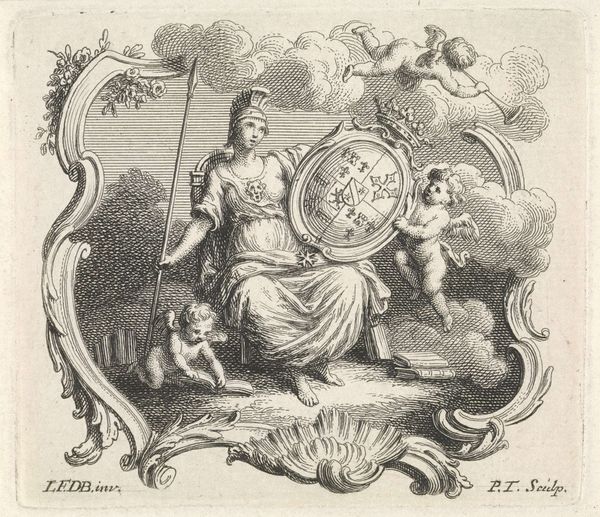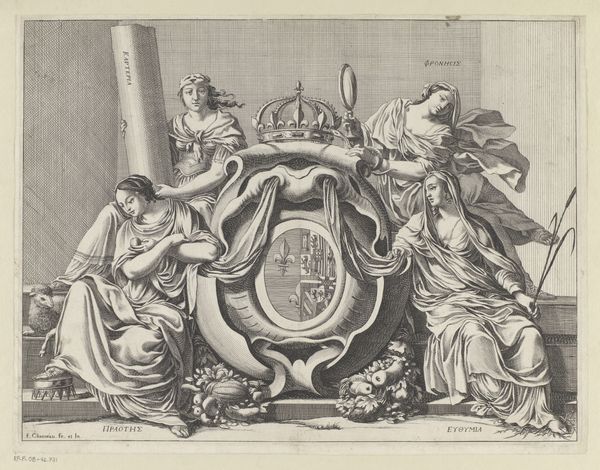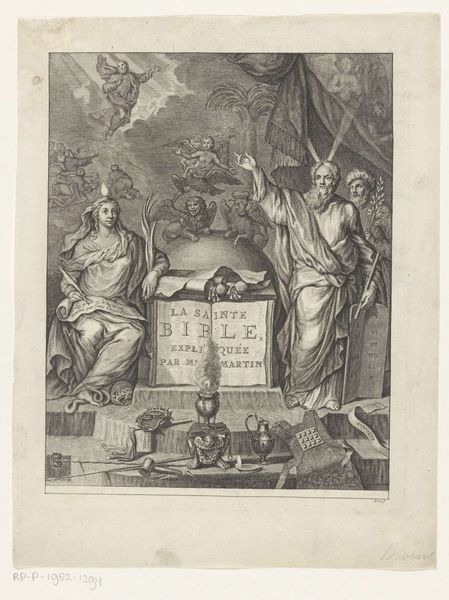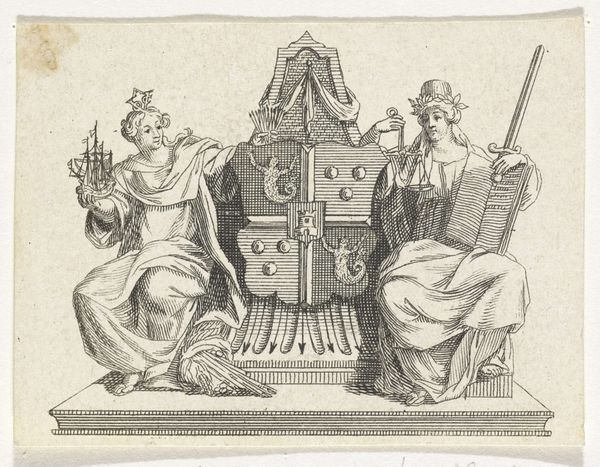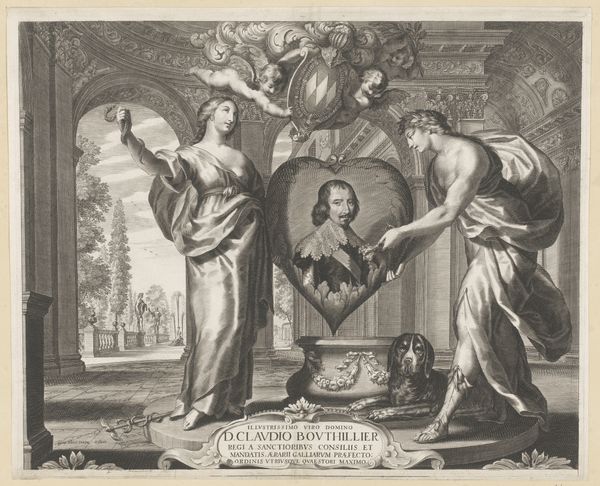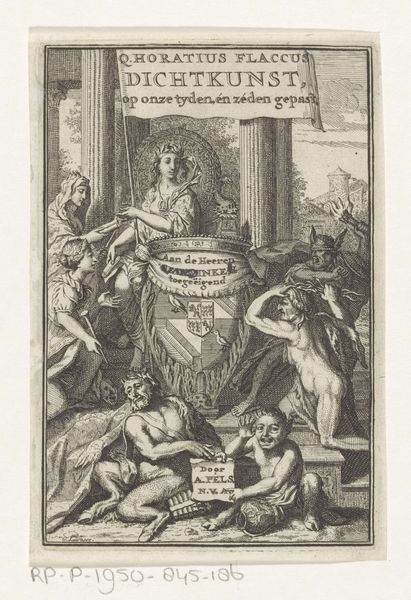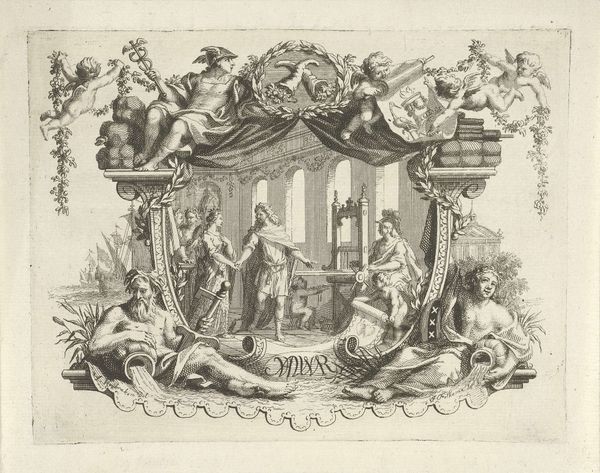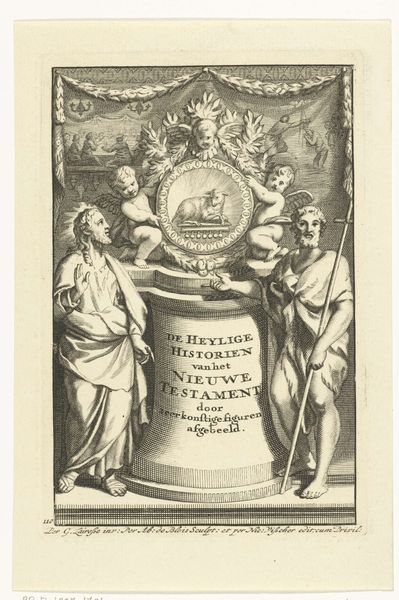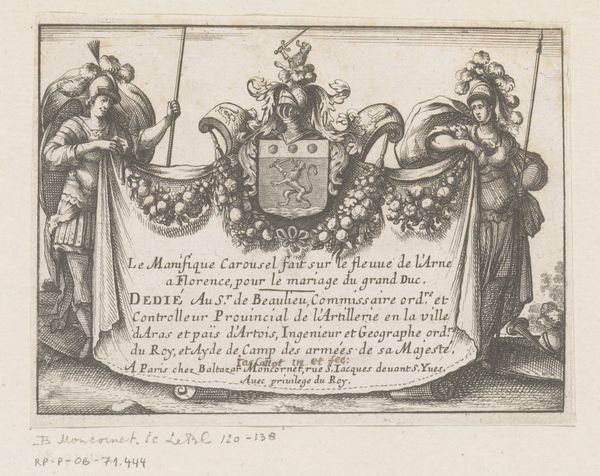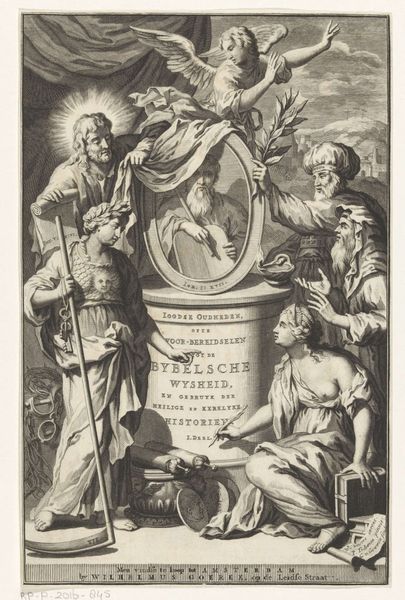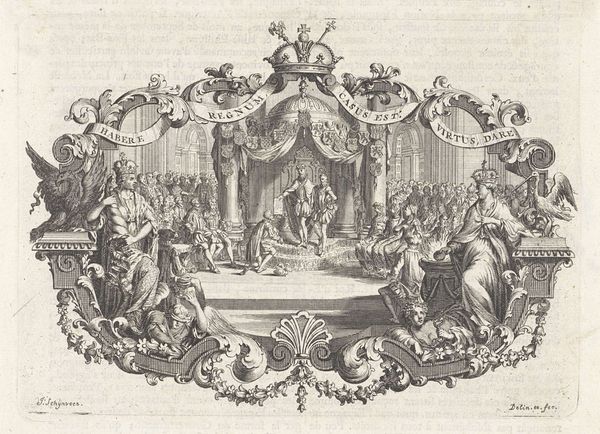
drawing, print, engraving
#
portrait
#
drawing
#
allegory
#
baroque
# print
#
old engraving style
#
landscape
#
figuration
#
form
#
personal sketchbook
#
line
#
history-painting
#
academic-art
#
engraving
Dimensions: width 55 mm, height 82 mm
Copyright: Rijks Museum: Open Domain
Curator: This is a delightful little engraving by Jan Goeree, dating back to 1733, titled "Vignet met een embleem van een boom," here at the Rijksmuseum. Editor: It strikes me as rather intricate. The density of lines is incredible, particularly around the central image of the tree and figures. It's quite tactile for a print; I can almost feel the pressure of the burin on the copper plate. Curator: Goeree was a master of allegory. Look at the figure on the left, adorned with a laurel wreath. That’s undoubtedly an allegorical representation of virtue, offering laurel and presumably victory. Editor: And juxtaposed on the right we see the classical trope of achievement or merit, almost reaching for what Virtue provides...it's carefully staged to evoke the connection between these ideas, with what seems like symbolic currency? All perched atop that central emblem: “Virtutis Gloria Merces"—glory is the reward of virtue. It's practically a brand identity, or at least, a visual motto. Curator: Exactly. And what’s fascinating is considering who would have commissioned such a piece. Emblems were powerful tools for self-promotion, often employed by intellectuals, merchants, or even political figures, to project an image of moral standing and worldly success. Think of the rising merchant class, the powerful guilds, all seeking legitimacy through cultural association. Editor: It also prompts questions about the engraving process itself. The labor invested here, the artisan skilled enough to produce such detail—how was this labor compensated? How did it situate Goeree within the art market of his time? Were these mass-produced or individually commissioned? It begs us to consider production and distribution, where this engraving was printed, sold, and collected. Curator: Yes, and consider the wider impact: Prints democratized art in a way that paintings couldn't. This engraving would have been disseminated widely, spreading these allegorical messages and ideals throughout Dutch society. The print functioned as a propaganda of moral and ethical codes, accessible to the educated class. Editor: Such detailed engraving offers a tangible, accessible reflection on how images shaped the very idea of “virtue" at this period. Curator: A fine emblem indeed, reflecting the power of virtue as promoted by Goeree’s capable hand. Editor: It pushes us to examine the material and social dimensions intertwined with artistic expression.
Comments
No comments
Be the first to comment and join the conversation on the ultimate creative platform.
